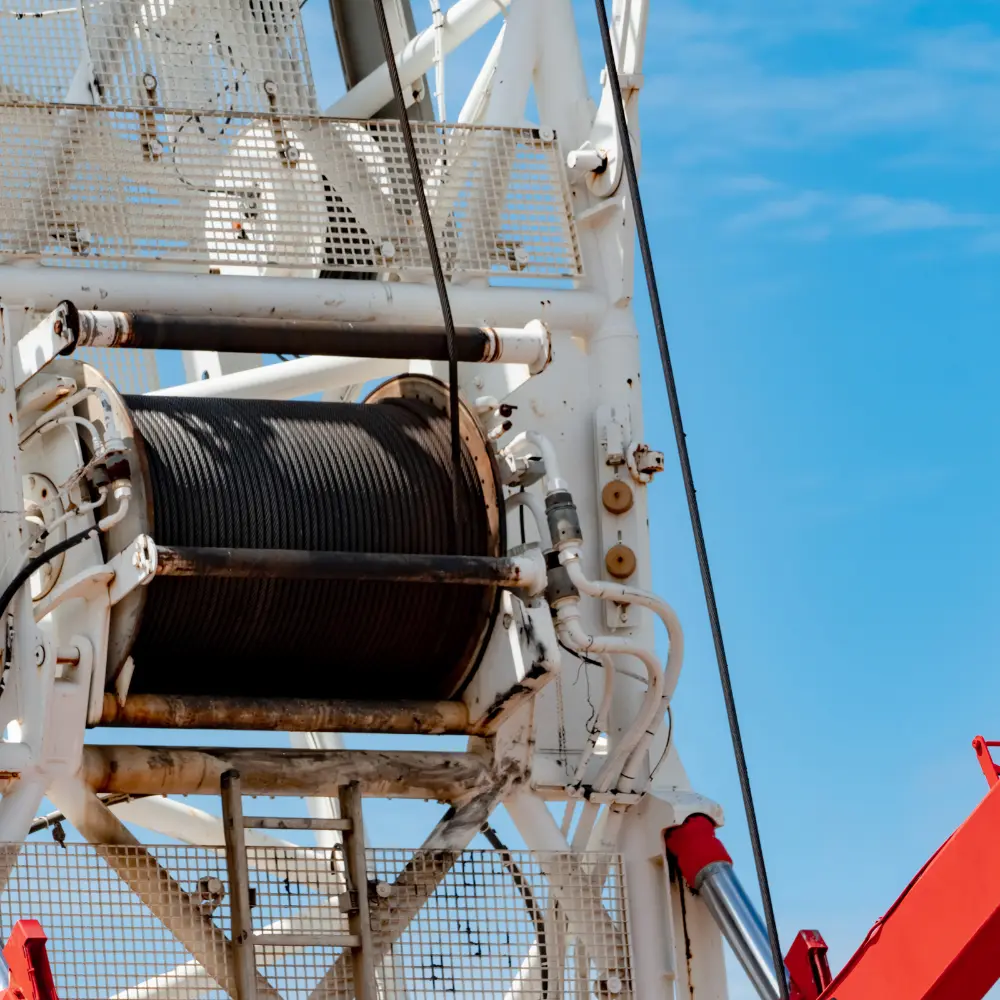 Impact loads are critical in determining steel wire ropes' friction and wear characteristics, especially in ultra-deep mining applications such as deep shaft mining and subsea mining, which involve multi-layer winding hoists. Understanding these effects is vital for engineers to design more durable and efficient hoisting systems. This article shows how impact loads affect the friction and wear of steel wire ropes sliding against each other.
Impact loads are critical in determining steel wire ropes' friction and wear characteristics, especially in ultra-deep mining applications such as deep shaft mining and subsea mining, which involve multi-layer winding hoists. Understanding these effects is vital for engineers to design more durable and efficient hoisting systems. This article shows how impact loads affect the friction and wear of steel wire ropes sliding against each other.
Coefficient of Friction (COF) under Impact Load
The Coefficient of Friction (COF), a measure of the resistance to sliding between two surfaces, is a crucial parameter in understanding the behavior of steel wire ropes under impact loads. It exhibits distinct behaviors compared to stable contact conditions. Under stable conditions, the COF remains constant with increasing load, stabilizing around 0.73 for dry-friction conditions and around 0.35 when lubrication is applied. However, the COF under impact load significantly reduces, with maximum values of approximately 0.36. This reduction is primarily due to the dynamic nature of impact, which affects the contact mechanics between the wire ropes.
Impact Load and Velocity
- Stable COF Values: The COF remains stable with an increasing impact load.
- Maximum COF under Impact: The maximum COF observed under impact load is significantly lower than during stable contact friction, stabilizing around 0.36.
Rebounding Effect: Higher impact loads cause the stationary load wheel to rebound, leading to multiple impact peaks in the COF. This phenomenon, known as the rebounding effect, can significantly influence the wear and friction characteristics of the steel wire ropes, necessitating careful consideration in the design of hoisting systems. Sliding Velocity Effects
- Decrease in COF: Under sliding conditions without impact, the COF decreases with increasing sliding velocity in dry conditions, reflecting reduced adhesion time between asperities on the wire surface.
- Lubrication Stability: In contrast, lubrication stabilizes the COF regardless of sliding velocity, demonstrating the effectiveness of lubrication in mitigating the impact of sliding speed on friction.
Temperature Rise during Friction
Temperature rise is a critical factor affecting the performance and lifespan of steel wire ropes. Under frictional contact, temperature increases rapidly at the onset of sliding, particularly in dry conditions. This rapid temperature rise can reach 103 °C, highlighting the intense heat generation due to friction. In contrast, lubrication significantly moderates this temperature increase, with maximum rises around 10 °C, due to the lubricating medium's ability to dissipate heat and reduce frictional forces.
- Initial Temperature Behavior: Temperature rise occurs rapidly during the initial friction stage, especially under dry-friction conditions.
- Long-term Temperature Behavior: As friction continues, the temperature stabilizes, although achieving this steady state is more challenging under dry conditions. Lubrication not only facilitates quicker stabilization but also maintains lower overall temperatures.
Wear Mechanisms under Impact Load
Steel wire ropes' wear mechanisms under impact loads are complex and multifaceted. In dry-friction conditions, wear is characterized by severe surface damage, including shear deformation, plastic deformation, cracking, pitting, and spalling. These wear mechanisms are driven by adhesive interactions, where material transfer occurs due to direct contact, and abrasive interactions, where wear debris acts as a grinding medium, leading to material removal.
Dry-Friction Conditions
- Severe Wear: Characterized by shear, plastic deformation, cracking, pitting, and spalling.
- Adhesive and Abrasive Wear: Both types of wear are prominent, with adhesive wear contributing to material transfer and abrasive wear caused by wear debris acting as a grinding medium.
Lubricated Conditions
- Reduced Wear Severity: Lubrication significantly mitigates wear, with the primary mechanism being adhesive wear.
- Protective Film: Grease forms a protective film that minimizes direct metal-to-metal contact, reducing wear.
Lubrication is crucial in extending the service life of wire ropes. Grease lowers the COF and acts as a thermal buffer, absorbing and dissipating frictional heat and significantly mitigating wear. This reassures you about the effectiveness of your current lubrication practices and highlights their critical importance in maintaining and operating hoisting systems.
Optimizing Performance and Durability of Stainless Steel Wire Ropes under Impact Loads
Knowledge-based actions have the potential to significantly enhance hoisting systems' safety and longevity. Hoisting systems' performance increases by reducing friction, managing temperature rise, minimizing wear through effective lubrication techniques, and understanding the impact load dynamics on steel wire ropes. This comprehensive understanding inspires and motivates you to implement these initiative-taking measures, ensuring the reliability and durability of your hoisting systems in the demanding environments of ultra-deep mining.
Related Reading